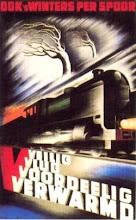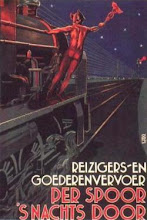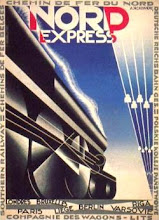

About one and a half years ago, I purchased an All Nation Line kit #A-110 for a C&LE box trailer. Initially the kit appeared complete, but a closer inspection learned that one of the four scribed wood side panels lacked. The lines of the scribed wood are very fine and roughly only 2 millimeters apart. The side panels are 3 millimeter thick and since this is a standard size in balsa wood, I used a piece of 3 mm balsa wood and tried to engrave fine lines in the balsa with a sharp hobby knive. I could not reach the detail level required; the lines were not straight and 2 mm apart was difficult with 1 mm incisions. So, I left that idea and started with fine paper strips glued with wood glue on a 3 mm balsa panel. Well, that did work. I got a good replicate of a scribed wood panel. After painting the lot with tuscan brown the differences between the original and the self-made panel will be hard to spot. Some photo's show the progress with the task of glueing the fine paper stripes.
Now I can finally start building the kit. Because of the beautiful original American toy-train-lingo, I copied the text of the original instructions underneath.
Instructions for C&LE Box trailer
Kit # A-110
1. Glue filler blocks at end of floor.
2. Shape roof and floor ends as shown, nail and glue end blocks to same.
3. Cut out door openings in scribed sides and glue to car body.
4. Glue scribed wood to end of car.
5. Glue facia boards at eaves to car as shown.
6. Form tinplate and drill holes for nut and washer castings. Pin to car and attach nut and washer castings as shown.
7. Drill 3/16" brass I beam so that it can be pinned to car. Solder Queen posts to beam and attach to car. Add .032 wire for truss rods and solder turnbuckle in place. Glue wood bolsters in place at this time.
8. Make doors from 1/16" scribed wood. Glue doors in place or if you wish, you can make an operating door. Glue 1/8" quarter round to sides as shown in drawing. Threshold is made from 5/32" strip wood.
9. Attach all hardware, such as handgrabs, steps, brake wheel and etc. as shown.
10. Paint car and attach Arch Bar Trucks.
Fortunately for me, there are two helpful internet sites with hints and tips on how to build wooden train car kits.
Dan clearly advises to start with the underfloor details: the bolsters, brake rig and queen posts and to use Nylon wire in stead of Brass wire for the truss rods. And
George Riley of the Railroad model craftsman also advises to start with the undercarriage and seal the wooden parts.














































